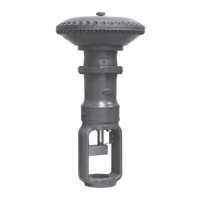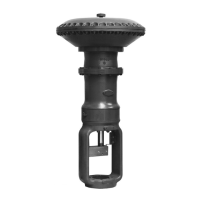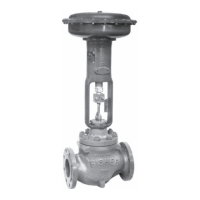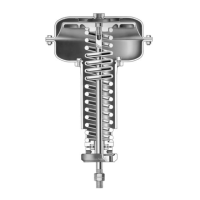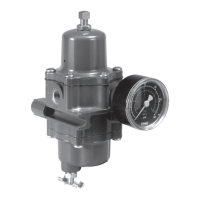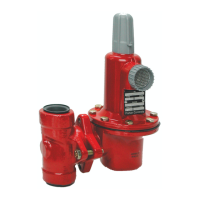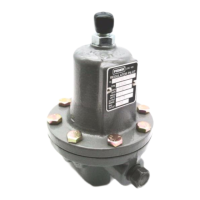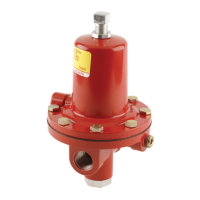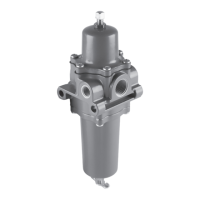Instruction Manual
D100310X012
667 Actuator (Size 30/30i - 76/76i and 87)
May 2018
11
2. Increase the actuator diaphragm pressure and read the diaphragm pressure as the actuator reaches a travel
position in the rated travel of the valve that does not contact a travel stop. Make a reference mark on the travel
indicator scale using tape or some other method at this point.
3. Increase the actuator diaphragm pressure until the actuator is at a travel position greater than the position
referenced in step 2 using the reference point to identify first movement.
4. Decrease the actuator diaphragm pressure and read the diaphragm pressure as the actuator returns to the position
referenced in step 2.
The difference between the two diaphragm pressure readings is the change in the diaphragm pressure required to
overcome the friction forces in the two directions of travel.
5. Calculate the actual friction force:
Friction
Force, = 0.5
pounds
Difference
in pressure
readings, psig
Effective
diaphragm area,
inches
2
Refer to table 1 for the effective diaphragm area.
It is difficult to rotate the spring adjustor (key 74, figures 6, 7, 8, 9, and 10) when the full actuator loading pressure is
applied to the actuator. Release the actuator loading pressure before adjusting. Then re-apply loading pressure to
check the adjustment.
Figure 5. Typical Valve Response to Deadband
UPPER
BENCH SET
PRESSURE
LOWER
BENCH SET
PRESSURE
9
3
0
CLOSING
VALVE
15
1.0
0.6
0.2
OPENING
VALVE
OPEN
CLOSED
MID RANGE
VALVE TRAVEL
DIAPHRAGM PRESSURE, PSIG
DIAPHRAGM PRESSURE, BAR
RANGE OF
DEADBAND
1
UPPER
BENCH SET
PRESSURE
LOWER
BENCH SET
PRESSURE
9
3
0
CLOSING
VALVE
15
1.0
0.6
0.2
OPENING
VALVE
OPEN
CLOSED
MID RANGE
VALVE TRAVEL
DIAPHRAGM PRESSURE, PSIG
DIAPHRAGM PRESSURE, BAR
1
NOTE:
DEADBAND IS CAUSED BY FRICTION.
A6763‐2
RANGE OF
DEADBAND
1
DIRECT ACTING VALVE REVERSE ACTING VALVE
BENCH SET BENCH SET
Deadband Measurement
Deadband is caused by packing friction, unbalanced forces, and other factors in the control valve assembly. Deadband
is the range a measured signal can vary without initiating a response from the actuator (see figure 5). Each actuator
spring has a fixed spring rate (force divided by compression). You have verified that the right spring was installed in the
actuator by completing the Spring Verification steps.
Deadband is one factor that affects the control valve assembly operation during automatic loop control. The control
loop tolerance for deadband varies widely depending on the loop response. Some common symptoms of the
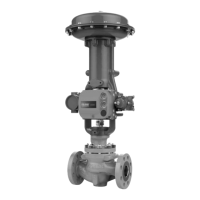
